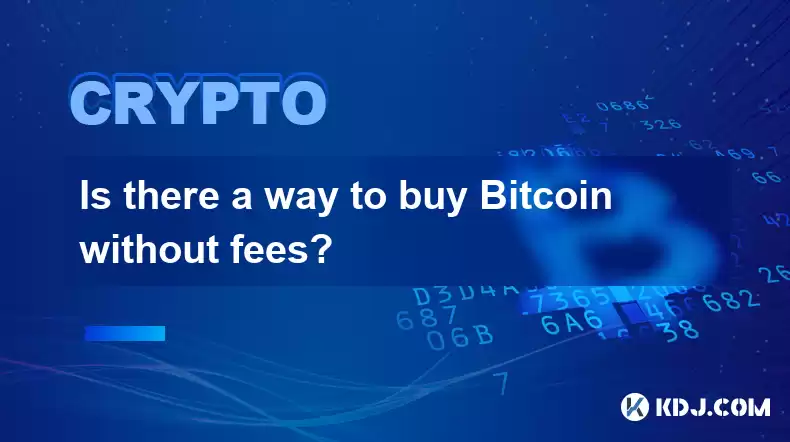-
 Bitcoin
Bitcoin $118400
0.47% -
 Ethereum
Ethereum $3836
2.20% -
 XRP
XRP $3.157
2.98% -
 Tether USDt
Tether USDt $0.9999
-0.03% -
 BNB
BNB $801.5
1.31% -
 Solana
Solana $180.9
2.07% -
 USDC
USDC $0.9999
-0.02% -
 Dogecoin
Dogecoin $0.2225
2.50% -
 TRON
TRON $0.3285
-1.02% -
 Cardano
Cardano $0.7789
2.60% -
 Hyperliquid
Hyperliquid $43.60
2.39% -
 Sui
Sui $3.892
4.41% -
 Stellar
Stellar $0.4229
3.34% -
 Chainlink
Chainlink $18.01
3.98% -
 Hedera
Hedera $0.2745
6.77% -
 Bitcoin Cash
Bitcoin Cash $582.3
3.38% -
 Avalanche
Avalanche $23.77
1.04% -
 Ethena USDe
Ethena USDe $1.001
0.01% -
 Toncoin
Toncoin $3.493
3.59% -
 Litecoin
Litecoin $110.0
2.48% -
 UNUS SED LEO
UNUS SED LEO $8.936
-0.37% -
 Shiba Inu
Shiba Inu $0.00001304
2.49% -
 Uniswap
Uniswap $9.999
1.09% -
 Polkadot
Polkadot $3.897
3.26% -
 Monero
Monero $308.6
-0.83% -
 Dai
Dai $0.9999
-0.01% -
 Bitget Token
Bitget Token $4.504
-0.04% -
 Pepe
Pepe $0.00001154
2.95% -
 Cronos
Cronos $0.1471
3.06% -
 Ethena
Ethena $0.6691
19.53%
Is there a way to buy Bitcoin without fees?
To minimize Bitcoin purchase fees, use P2P exchanges cautiously, choose low-fee platforms, batch transactions, and consider the Lightning Network, but never compromise security.
Mar 28, 2025 at 02:35 am

Understanding Bitcoin Transaction Fees
Buying Bitcoin, like any other transaction, typically involves fees. These fees compensate miners for processing and verifying transactions on the Bitcoin blockchain. The fee amount fluctuates depending on network congestion. Higher congestion means higher fees as miners prioritize transactions with higher fees. Completely avoiding fees is practically impossible, but minimizing them is achievable.
Minimizing Bitcoin Purchase Fees: Strategies and Tactics
Several strategies can help reduce, though not eliminate, the fees associated with buying Bitcoin. These strategies focus on choosing the right platforms and methods.
Peer-to-Peer (P2P) Exchanges: These platforms connect buyers and sellers directly. While they often advertise lower fees than centralized exchanges, you need to be cautious about scams and security. Negotiating fees directly with the seller is possible, but it requires careful vetting of the counterparty. Always prioritize security and reputation when using P2P platforms.
Choosing the Right Exchange: Different cryptocurrency exchanges charge varying fees. Some offer lower trading fees or even zero fees for specific payment methods. Thoroughly research exchange fee structures before committing. Compare fees for different payment methods like bank transfers, debit cards, or credit cards, as these can significantly impact the overall cost.
Batching Transactions: If you plan to buy Bitcoin regularly, consider accumulating funds and making larger purchases less frequently. This can reduce the per-Bitcoin fee since the total fee is often not directly proportional to the amount of Bitcoin bought.
Using Lightning Network: The Lightning Network is a layer-2 scaling solution for Bitcoin that allows for faster and cheaper transactions. While not all exchanges support it directly for Bitcoin purchases, it's worth exploring if your chosen exchange offers this option. Note that using the Lightning Network requires a certain level of technical understanding.
Direct Bitcoin Purchases: Some individuals or businesses might offer Bitcoin directly for sale, potentially at a lower cost than through exchanges. However, this method carries a higher risk due to the lack of regulatory oversight and increased potential for scams. Proceed with extreme caution and only deal with trusted individuals or businesses.
Understanding Different Fee Structures
Exchanges typically use different fee structures. Some charge a flat fee per transaction, while others charge a percentage of the transaction value. Some might offer tiered fee structures based on trading volume. Understanding these structures is crucial for minimizing costs. Always check the fee schedule of your chosen platform before making a purchase. Additionally, many platforms also charge deposit and withdrawal fees, which should be factored into your overall cost calculation.
The Role of Network Congestion
Bitcoin transaction fees are heavily influenced by network congestion. When many transactions are being processed simultaneously, miners prioritize those with higher fees, leading to increased costs for users. This is a fundamental aspect of the Bitcoin network's operation. Monitoring network congestion can help you time your purchases strategically to potentially reduce fees. However, predicting network congestion with perfect accuracy is impossible.
Payment Method Impact on Fees
Your chosen payment method can significantly affect the total fees you pay. Credit card purchases often incur higher fees compared to bank transfers due to the processing costs associated with credit card networks. Explore different payment options offered by your exchange to identify the most cost-effective method. Be mindful of potential additional fees levied by your bank or payment provider.
Security Considerations When Minimizing Fees
While striving to minimize fees is important, never compromise on security. Avoid using untrusted exchanges or engaging in risky transactions just to save a small amount on fees. Prioritize the security of your funds above all else. Always use reputable platforms and follow best security practices.
The Illusion of "Zero Fee" Transactions
Some platforms advertise "zero-fee" Bitcoin purchases. However, it's crucial to understand that these fees are often hidden or absorbed elsewhere. For instance, the platform might compensate for the lack of explicit transaction fees through higher spreads (the difference between the buying and selling price) or other charges. Carefully examine the complete cost structure, not just the advertised transaction fees.
Frequently Asked Questions
Q: Are there any completely free ways to get Bitcoin?
A: No, there aren't completely free ways to acquire Bitcoin. All methods involve some cost, whether it's a transaction fee, a spread, or an indirect cost.
Q: How can I find the lowest Bitcoin transaction fees?
A: Monitoring network congestion and comparing fees across different exchanges and payment methods can help you find the lowest fees. However, the lowest fees might not always come from the most reputable sources.
Q: What are the risks of using P2P exchanges to buy Bitcoin?
A: P2P exchanges carry risks like scams, fraud, and security breaches. Thorough due diligence and security measures are crucial.
Q: Do all exchanges charge the same fees?
A: No, exchanges have different fee structures. Comparing fees across multiple platforms is essential before making a purchase.
Q: Can I avoid fees by using a specific wallet?
A: Your wallet choice doesn't directly impact the fees charged for buying Bitcoin; fees are determined by the exchange or platform you use to purchase it. However, some wallets might offer features to manage fees more effectively when sending Bitcoin.
Disclaimer:info@kdj.com
The information provided is not trading advice. kdj.com does not assume any responsibility for any investments made based on the information provided in this article. Cryptocurrencies are highly volatile and it is highly recommended that you invest with caution after thorough research!
If you believe that the content used on this website infringes your copyright, please contact us immediately (info@kdj.com) and we will delete it promptly.
- Pudgy Penguins Price Prediction: Buying Opportunity or Insider Dump?
- 2025-07-31 18:50:35
- Shrapnel, GalaChain, and China Gaming: A New Frontier
- 2025-07-31 19:10:35
- Dogecoin Howl: Bullish Signals and Analyst Bites – Is the Meme Coin Ready to Pounce?
- 2025-07-31 18:30:16
- Decoding Crypto Presales, Ethereum's Role, and Navigating a Tricky Altcoin Season
- 2025-07-31 18:30:16
- Bolivia, Crypto, and El Salvador: A Shifting Landscape
- 2025-07-31 18:50:35
- DAOs, Tokenomics, and Game Communities: Leveling Up the Game
- 2025-07-31 18:56:31
Related knowledge

What is the significance of the 21-week EMA in a Bitcoin bull market?
Jul 10,2025 at 06:56pm
Understanding the 21-Week EMA in Cryptocurrency AnalysisThe 21-week Exponential Moving Average (EMA) is a technical indicator widely used by traders a...

How to identify a volatility contraction pattern on Bitcoin using indicators?
Jul 07,2025 at 07:28am
What is a Volatility Contraction Pattern in Bitcoin Trading?A volatility contraction pattern refers to a phase where the price movement of an asset, s...

Do indicators work better on a logarithmic or linear scale for Bitcoin's long-term chart?
Jul 08,2025 at 01:42pm
Understanding Chart Scales in Cryptocurrency TradingIn cryptocurrency trading, particularly for analyzing Bitcoin's long-term trends, chart scales pla...

What is the Woodies CCI indicator and can it be used for Bitcoin?
Jul 04,2025 at 05:14pm
Understanding the Woodies CCI IndicatorThe Woodies CCI indicator is a variation of the traditional Commodity Channel Index (CCI), which was originally...

How to use indicators to trade the opening range breakout for Bitcoin CME futures?
Jul 05,2025 at 07:35pm
What Is the Opening Range Breakout Strategy?The opening range breakout (ORB) strategy is a popular trading technique used in both traditional markets ...

How to use the Relative Vigor Index (RVI) for Bitcoin trading?
Jul 07,2025 at 02:00pm
Understanding the Relative Vigor Index (RVI)The Relative Vigor Index (RVI) is a technical analysis tool used to assess the strength of price movements...

What is the significance of the 21-week EMA in a Bitcoin bull market?
Jul 10,2025 at 06:56pm
Understanding the 21-Week EMA in Cryptocurrency AnalysisThe 21-week Exponential Moving Average (EMA) is a technical indicator widely used by traders a...

How to identify a volatility contraction pattern on Bitcoin using indicators?
Jul 07,2025 at 07:28am
What is a Volatility Contraction Pattern in Bitcoin Trading?A volatility contraction pattern refers to a phase where the price movement of an asset, s...

Do indicators work better on a logarithmic or linear scale for Bitcoin's long-term chart?
Jul 08,2025 at 01:42pm
Understanding Chart Scales in Cryptocurrency TradingIn cryptocurrency trading, particularly for analyzing Bitcoin's long-term trends, chart scales pla...

What is the Woodies CCI indicator and can it be used for Bitcoin?
Jul 04,2025 at 05:14pm
Understanding the Woodies CCI IndicatorThe Woodies CCI indicator is a variation of the traditional Commodity Channel Index (CCI), which was originally...

How to use indicators to trade the opening range breakout for Bitcoin CME futures?
Jul 05,2025 at 07:35pm
What Is the Opening Range Breakout Strategy?The opening range breakout (ORB) strategy is a popular trading technique used in both traditional markets ...

How to use the Relative Vigor Index (RVI) for Bitcoin trading?
Jul 07,2025 at 02:00pm
Understanding the Relative Vigor Index (RVI)The Relative Vigor Index (RVI) is a technical analysis tool used to assess the strength of price movements...
See all articles

























































































